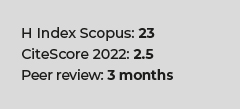Maternal hemoglobin in Peru: regional differences and its association with adverse perinatal outcomes
DOI:
https://doi.org/10.17843/rpmesp.2011.283.527Keywords:
Hemoglobins, Anemia, Erythrocytosis, pregnancy, pregnancy outcome, PeruAbstract
Objectives. To evaluate hemoglobin (Hb) levels in pregnant women from different geographical regions from Peru; to establish anemia and erythrocytocis rates and to establish the role of Hb on adverse perinatal outcomes using the Perinatal Information System (PIS) database of Peruvian Ministry of Health. Materials and methods. Data were obtained from 379,816 births of 43 maternity care units between 2000 and 2010. Anemia and erythrocytocis rates were determined in each geographical region as well as rates of adverse perinatal outcomes. To analyze data the STATA program (versión 10.0,Texas, USA) was used. The results were considered significant at p<0.01. Results. Mild anemia rate was higher in the coast (25.8%) and low forest (26.2%). Moderate/severe anemia rate in low forest was 2.6% and at the coast was 1.0%. In the highland, the highest rate of moderate/severe anemia was in the southern highlands (0.6%). The highest rate of erythrocytocis was found in the central highland (23.7%), 11.9% in the southern highland and 9.5% in the north highland. Severe anemia and erythrocytocis were associated with adverse perinatal outcomes. Conclusions. There are differences by Peruvian geographical region in anemia rates. In the central highlands were found the highest rates of erythrocytocis due to hypoxia effect in the high altitudes; however in the southern highlands, erythrocytocis was lower. Severe anemia and erythrocytosis were associated with increased adverse perinatal outcomes.Downloads
Download data is not yet available.
Downloads
Published
2011-09-30
Issue
Section
Research Articles
How to Cite
1.
Gonzales GF, Tapia V, Gasco M, Carrillo C. Maternal hemoglobin in Peru: regional differences and its association with adverse perinatal outcomes. Rev Peru Med Exp Salud Publica [Internet]. 2011 Sep. 30 [cited 2024 Apr. 24];28(3). Available from: https://rpmesp.ins.gob.pe/index.php/rpmesp/article/view/527



























